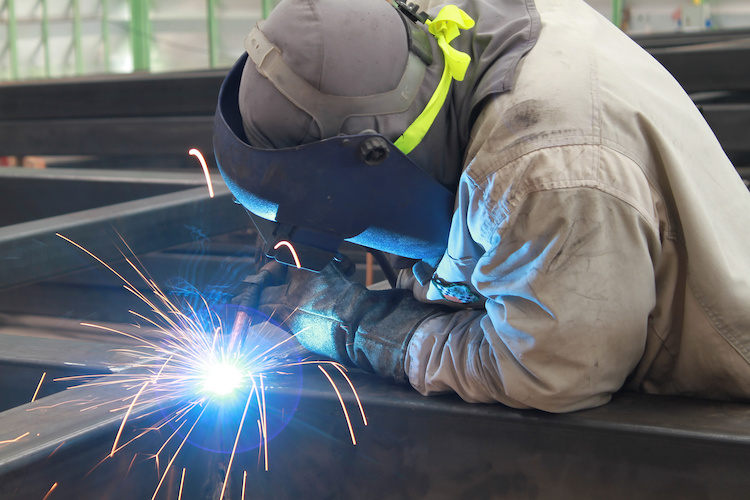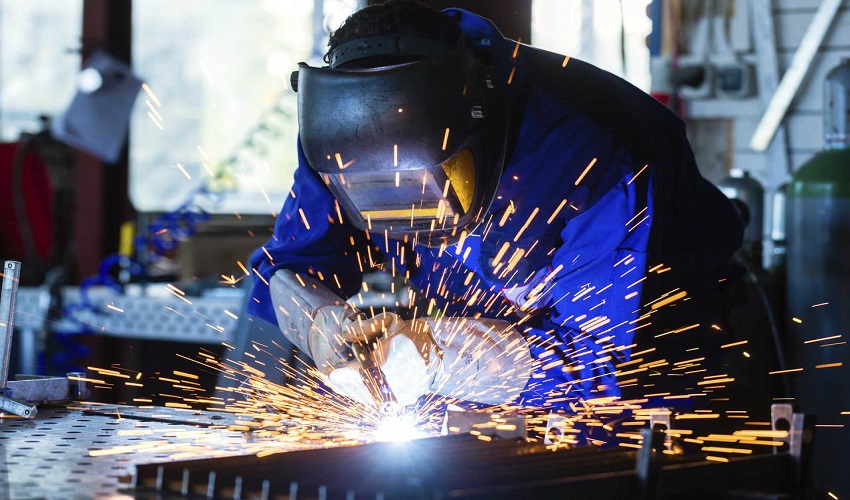Comprehensive Steel Fixing Solutions for Construction Projects
Comprehensive Steel Fixing Solutions for Construction Projects
Blog Article
Comprehensive Analysis of Cutting-Edge Techniques in Steel Manufacture Market
As the steel fabrication sector continues to progress, the integration of sophisticated methods has actually ended up being crucial for remaining affordable and satisfying the needs of contemporary production requirements. From laser reducing advancements to the application of robotics and 3D printing in steel manufacturing, the landscape of manufacture techniques is swiftly changing. With each advancement bringing its own collection of difficulties and advantages, a comprehensive evaluation of these methods is paramount for business intending to simplify their processes, improve accuracy, and eventually, elevate the high quality of their steel manufacture output. In this dynamic market where innovation plays a crucial role, comprehending the subtleties of these sophisticated techniques is not just an option however a requirement for those seeking to advance in the ever-evolving world of steel fabrication.
Laser Reducing Improvements
In the realm of steel fabrication, laser reducing innovations have reinvented the precision and efficiency of steel shaping processes. By utilizing the power of focused laser light beams, makers can now achieve unrivaled degrees of accuracy when cutting via numerous kinds of metals. This modern technology makes it possible for elaborate designs to be implemented with marginal material waste, making it an economical solution for sectors needing high accuracy elements.
One of the vital advantages of laser cutting is its capacity to deal with a wide variety of materials, consisting of stainless-steel, aluminum, and carbon steel, with convenience. The process creates tidy, burr-free edges, removing the need for added completing actions. The non-contact nature of laser cutting lowers the danger of product contamination, resulting in higher quality end products.
Furthermore, laser reducing devices can be configured to make swift, accurate cuts, considerably lowering manufacturing time contrasted to standard reducing approaches. This speed and accuracy make laser cutting especially ideal for automation environments where effectiveness is extremely important. As technology remains to advancement, laser cutting is poised to play a progressively vital function in the steel construction market.

CNC Machining Innovations
The advancement of CNC machining modern technologies has introduced a brand-new age of precision and efficiency in the steel fabrication market. Computer System Numerical Control (CNC) machines have revolutionized steel fabrication by using exceptional precision and repeatability in the production procedure. steel fixing. Among the key technologies in CNC machining is the combination of innovative software program systems that make it possible for real-time surveillance and adjustments, leading to improved productivity and quality assurance
Additionally, the growth of multi-axis CNC devices has permitted for the construction of intricate steel components with intricate designs that were formerly testing to produce. These makers can carry out a wide variety of machining procedures, including milling, exploration, turning, and grinding, all with high levels of accuracy.
Additionally, the unification of automation and robotics in CNC machining has streamlined manufacturing procedures, reduced lead times, and decreased the margin of error. This assimilation of innovative modern technologies not only increases effectiveness yet also guarantees regular top quality across all fabricated steel parts. To conclude, CNC machining technologies remain to drive improvements in the steel manufacture sector, establishing brand-new see this website standards for precision and productivity.
Automated Welding Technologies
Automated welding technologies have reinvented the steel manufacture sector, boosting performance and accuracy in the welding procedure. These sophisticated modern technologies utilize computer-controlled systems to automate the welding procedure, bring about higher efficiency levels and improved weld quality. Among the vital advantages of automated welding is the capacity to do complicated welds with constant accuracy, reducing the likelihood of mistakes and revamp.
Robot welding systems are at the forefront of automated welding technologies, offering unrivaled rate and accuracy. These systems can manage a variety of welding tasks, from simple to detailed, effortlessly (steel fabricators melbourne). By utilizing innovative sensing units and software program, robotic welders can adjust to variants in material and joint geometry, making certain an uniform and dependable weld
In addition, automated welding modern technologies boost office safety by decreasing the exposure of human welders to unsafe fumes and intense warm. As the steel fabrication market remains to advance, incorporating automated welding technologies will certainly be necessary for business looking to stay affordable and satisfy the expanding needs for high-quality bonded products.
Robotics Assimilation in Fabrication
Using robot systems in manufacture processes has actually ended up being a pivotal approach for improving performance and precision in modern production atmospheres. Robotics you can try these out integration in steel fabrication offers a myriad of advantages, consisting of increased performance, boosted quality assurance, and boosted precaution. These sophisticated robot systems are furnished with sophisticated sensors and shows abilities, enabling them to perform complex jobs with a high level of precision and repeatability.
Among the essential benefits of robotics integration in steel manufacture is the capacity to automate repetitive jobs, such as product handling, reducing, welding, and setting up processes. This not only speeds up production cycles but also decreases the danger of human error, resulting in higher overall product top quality. In addition, robotics can run 24/7, dramatically increasing production output and conference limited job deadlines.

3D Printing in Steel Production
Having reinvented the steel manufacture industry via robotics combination, the burgeoning exploration of 3D printing in steel manufacturing is positioned to more advancement the realm of contemporary manufacturing strategies. 3D printing, likewise recognized as additive manufacturing, provides unmatched layout you can find out more freedom and complexity, allowing the production of intricate steel structures that were previously unattainable with standard production approaches. By utilizing computer-aided design (CAD) software application, manufacturers can exactly regulate the layer-by-layer deposition of steel product, causing components with enhanced geometries and functionalities.
Among the essential advantages of 3D printing in steel manufacturing is its capacity to minimize product waste substantially. Unlike subtractive manufacturing procedures where excess product is cut away, 3D printing only makes use of the required amount of steel needed for the last component. This performance not just causes cost savings but also aligns with lasting manufacturing techniques by lessening environmental impact.
Furthermore, 3D printing enables rapid prototyping and customization, enabling the manufacturing of little batches of intricate steel parts with short preparations. As the modern technology proceeds to grow and become a lot more easily accessible, its integration into mainstream steel manufacture procedures is anticipated to drive development and efficiency across the industry.
Final Thought
Finally, the steel fabrication industry has seen considerable advancements in strategies such as laser cutting, CNC machining, automated welding, robotics assimilation, and 3D printing. These sophisticated technologies have revolutionized the way steel items are made, resulting in increased effectiveness, precision, and cost-effectiveness. Continued investment in these innovative techniques is important for the market to stay affordable and satisfy the demands of contemporary production processes.
As the steel construction market continues to evolve, the integration of cutting-edge techniques has actually come to be crucial for remaining affordable and meeting the demands of modern-day production requirements.One of the key advantages of laser cutting is its capacity to take care of a vast variety of materials, consisting of stainless steel, light weight aluminum, and carbon steel, with simplicity.Automated welding technologies have actually reinvented the steel manufacture sector, improving efficiency and accuracy in the welding procedure.Having changed the steel construction industry via robotics combination, the burgeoning expedition of 3D printing in steel manufacturing is positioned to further breakthrough the realm of modern-day manufacturing techniques.In final thought, the steel fabrication sector has seen substantial developments in techniques such as laser cutting, CNC machining, automated welding, robotics combination, and 3D printing.
Report this page